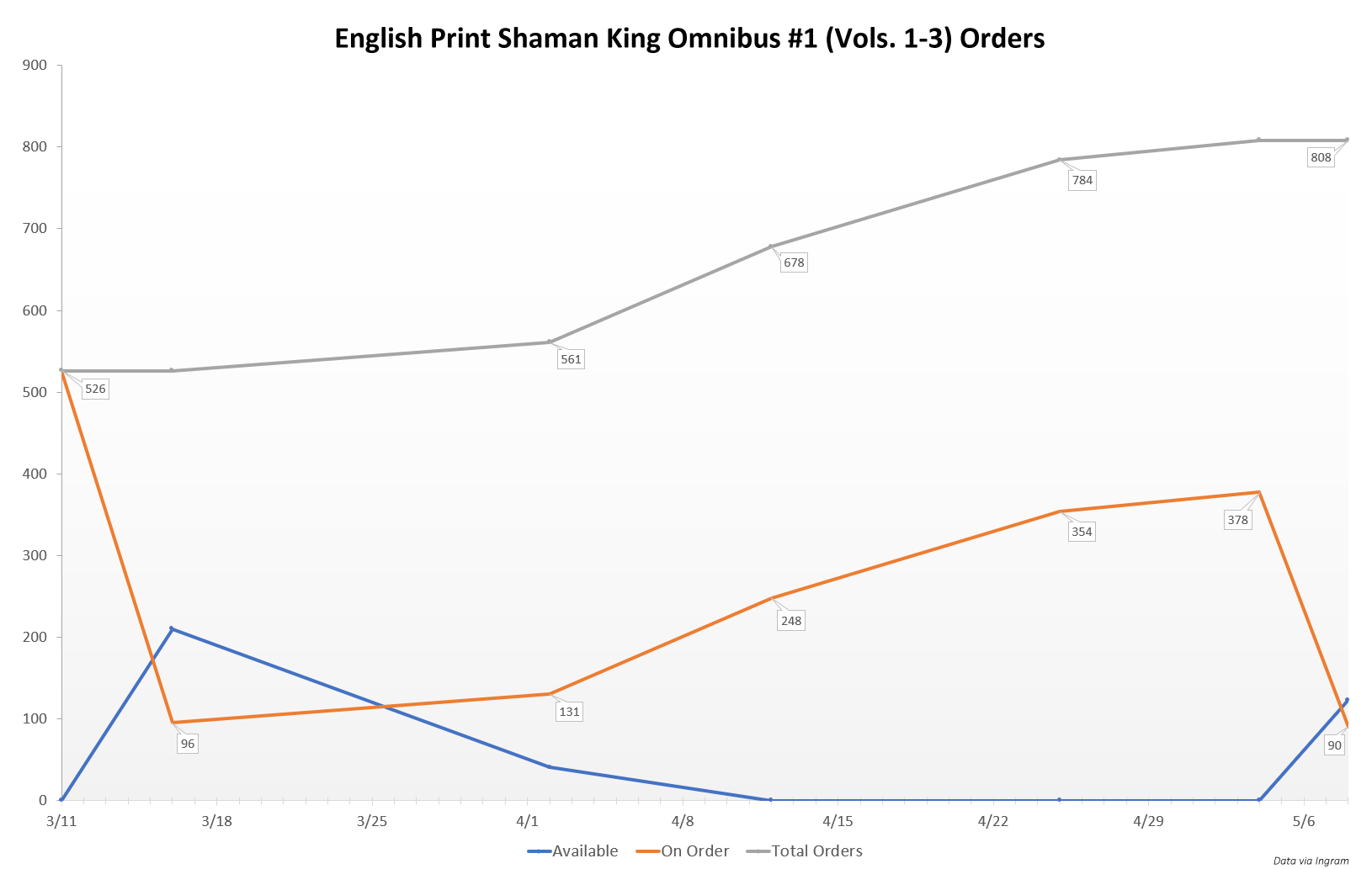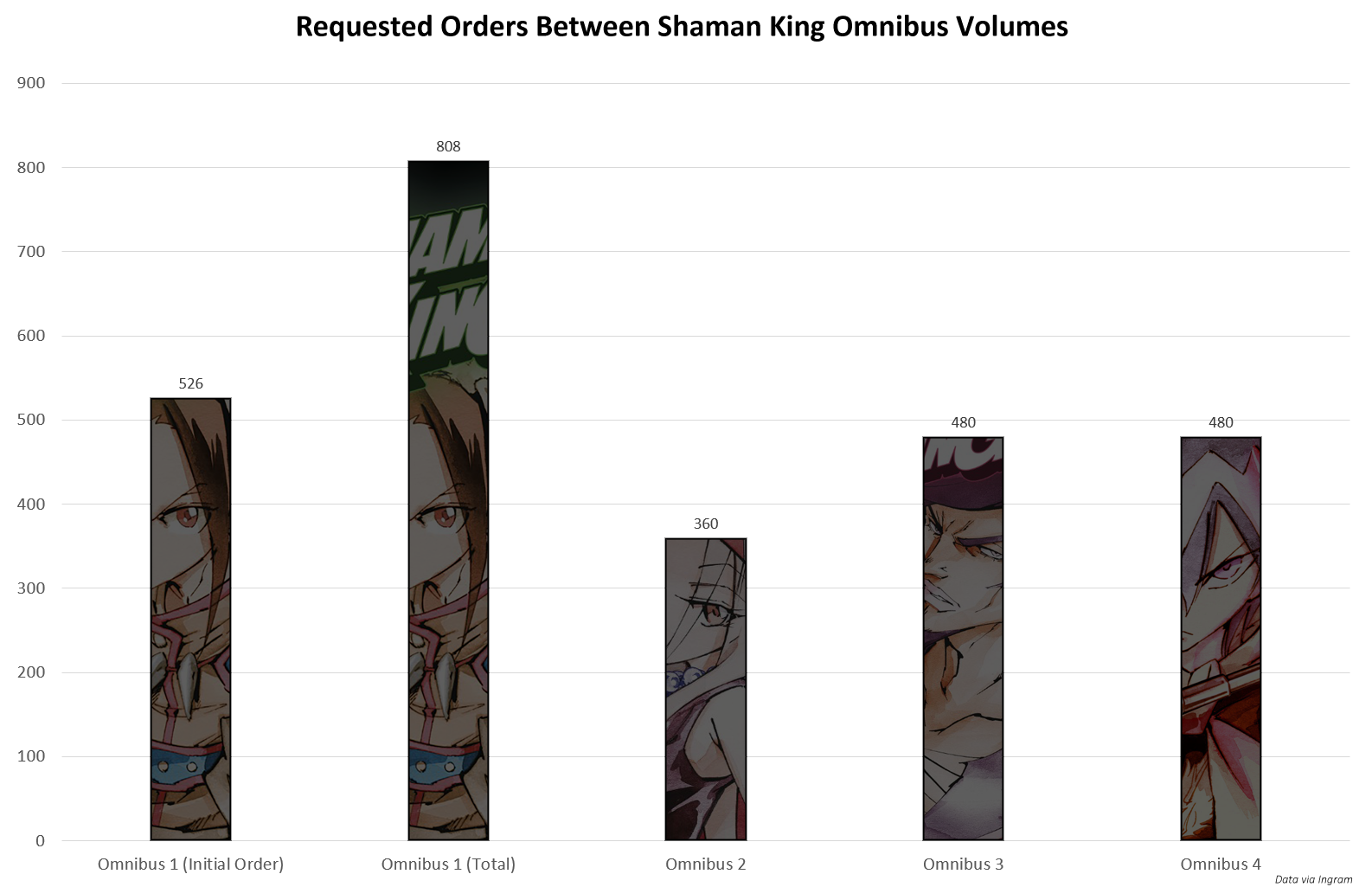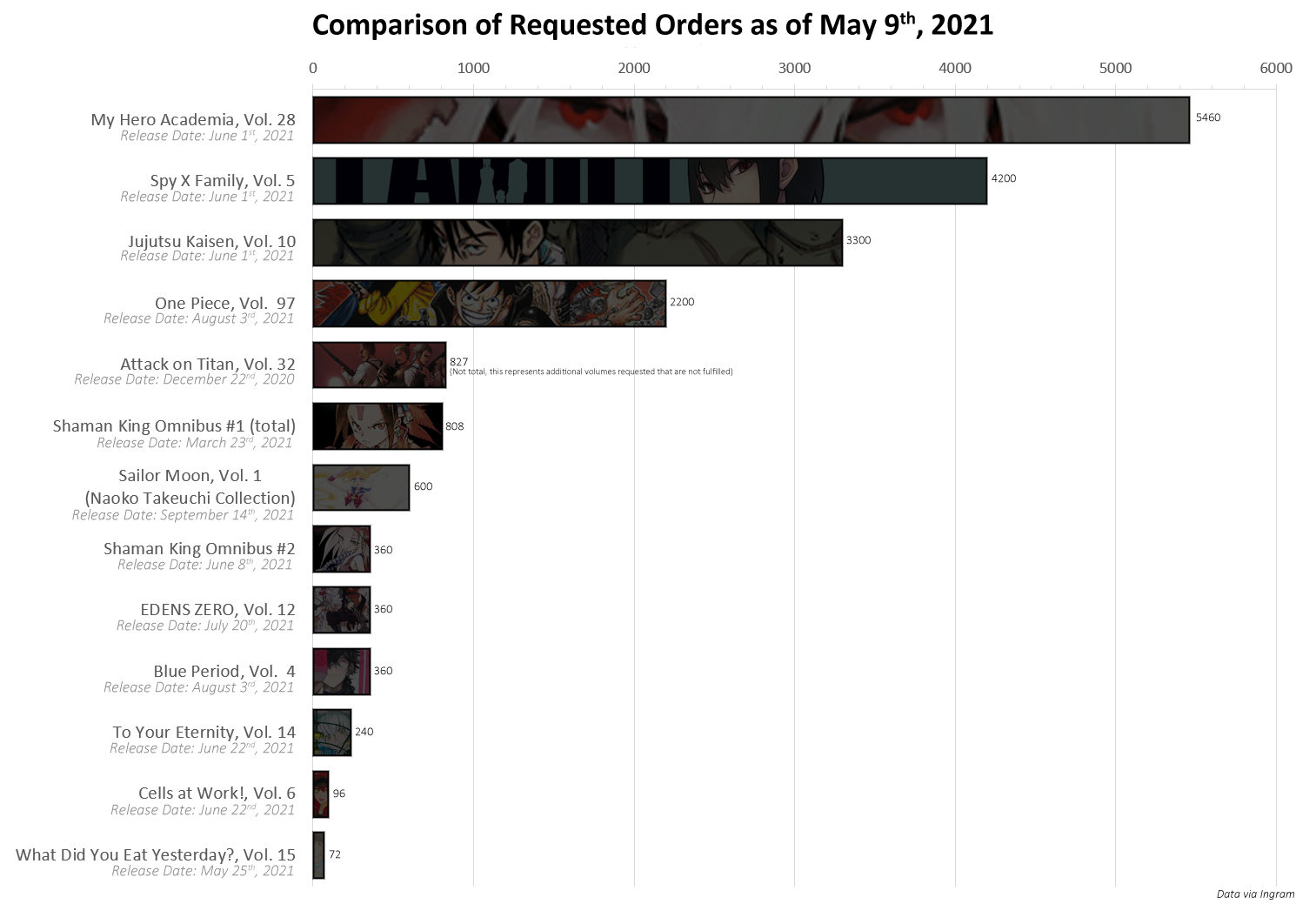Around the world, the actual sales numbers for manga volumes are pieces of information that typically only the publishers and license holders have access to. Without this information, it may not be easy to have a full grasp on how well a manga series is selling from a fan’s perspective, as having exact numbers can help clarify the situation. From various reporting, and sometimes generalized sales figures that get announced, there are some amount of estimates that can be made. In North America, the books and comic distribution network is a bit complex so before we dig into the representative numbers available, having a high-level, oversimplification, understanding on where these numbers come from is important. Then we’ll get into how it related to the English print edition of Shaman King Omnibus #1 (which we wrote an overview previously) and the later volumes.
From Printers To Your Hands
After the contents of a manga volume have been completed and proofread by the Publisher/Licensor, the files for that are sent to the print manufacturer for the books. Depending on who and where this book is being printed may also have multiple steps. However, for simplicity, the Shaman King Omnibus volumes are printed all within the United States. Once the book is printed by the manufacturer it is loaded into cartons with a set number of books. For example, a single carton of Shaman King Omnibus #1 volumes contains 24 copies of the book. These cartons are then sent to a warehouse supplier. The warehouse supplier will often have multiple warehouses across the United States. From the warehouses then they are sent to the bookstore chain’s warehouses. One example would be to Amazon or Barnes & Noble. Then from there the cartons are broken up into smaller amounts and repackaged and shipped to the individual stores. If a bookstore needs more copies they can then request them from the warehouse supplier.
Understanding the Numbers
The piece of information we’ll be looking at is the number of orders from the warehouse supplier, Ingram. For our numbers, this represents 4 warehouses in North America. As we do not know the entire chain the books follow, there may be other paths the books may take to get to bookstores. For example, Amazon or Walmart may have deals with the print manufacturer which would bypass the warehouse supplier Ingram. Alternately, there may be orders for bookstore chains that not included in these numbers and may only show otherwise unallocated numbers. Also orders at the warehouse can be cancelled and are not considered a sale.
With these considerations in mind, these are not “Sales Numbers” for the volumes. Instead you can use these numbers to extrapolate trends with how these compare to the English print manga industry. You can click to expand any of the charts/images in this article.
Initial & Follow-up Orders for Omnibus #1
When placing the orders for a new series, warehouses and booksellers attempt to gauge the interest for the series and limit the number of extra volumes they would need to get. If the number they order is less than the demand from fans, then this creates a shortage or potentially sells out the number of copies available. Below is a graph that helps track some of the orders for Omnibus #1 across a two month period for the orders at Ingram.

In the grey line across the top, we can see that while it started with 526 orders prior to the volume’s release, that number increased over time up to total 808 orders eventually requested. The orange line helps show how many orders the warehouse supplier was waiting on from the book manufacturer on those same dates. Then the blue line finally shows how many orders the warehouse has that haven’t been shipped to the bookstores.
You’ll notice that after the volume had been released on March 23rd, the number of new orders for the volumes went up considerably. This is shows the underestimate they made for how popular the first volume was. As a result from this, if you were looking for a copy of the first omnibus volume in stores you were likely going to find it sold out very quickly after release. But starting last week the number of available copies has started to increase (blue line) and the remaining number of orders waiting to be received (orange line) has decreased. Once the remaining unfulfilled orders is completed in the near future, we’ll find out if even more will need to be ordered or if the book will be widely available.
Comparing Order Numbers Across Volumes
While having the information on just the first Omnibus volume is good, there is some interesting numbers with how this compares across the future volumes coming out this Summer and Fall in North America.

Typically the highest number of volumes sale for a series will be the first volume. Then the number of volume sales will slowly decrease for a series over time on the subsequent volumes.
In the chart above, you’ll notice the Omnibus #2 (Vol. 4-6) has a significantly lower number of orders than all of the other volumes. Similar to Omnibus #1, the warehouse supplier could request more orders after its release. This will likely result in a shortage of Omnibus #2 on the market on its release in June. If you haven’t already, be sure to pre-order from your local bookstore or online to reserve your copy. You can also request that books be put on-hold for you at physical local bookstores.
Comparing Shaman King to Other Series
When a bookstore stocks a volume of manga there is a limit on how many volumes they can buy at any one time. They don’t want to flood their shelves with too many copies that won’t sell quickly. And they traditionally don’t want to have large swings in the shelf space set aside for a series, as it would require reorganizing the store and taking shelf space away from other books. If you are pre-ordering the manga volume, those numbers typically don’t impact this, as that is a guaranteed sale and aren’t stocked on the shelves in the store.
June is a very busy month in terms of new manga releases in North America. So while Shaman King may be a big release for Kodansha USA, there are also new volumes of My Hero Academia, Spy X Family, and Jujutsu Kaisen also coming out the week before from Viz Media. To see how these compare, the following is a list of titles for the current requested orders on Ingram on May 9th, 2021.

To compare how these order numbers relate to first print run numbers, My Hero Academia volume 28 will have 200,000 copies in English. This is a self-reported number from Viz Media on how many copies it was planning on printing for the initial release date. Additional runs will likely occur to meet the follow-up demand or incomplete orders. This volume of My Hero Academia will likely be on the New York Times Best Sellers list for Graphic Novels and Manga in June. Overall, the sales numbers for English manga have increased significantly in 2020 and into 2021. Due to the demand and restricted resources at the printing manufacturers, there may not always be enough stock in the initial shipments to meet the demand.
With Shaman King Omnibus #2 being a lower number of orders in June, most bookstores will be allocating their book shelves towards the big sellers that are taking the top of the list. While these titles are in a league of their own, we can still compare Shaman King to some other titles to get a feel how it ranks with manga series with similar print runs.
The Attack on Titan volume 32 is not the most recent volume release and was released back in December 2020. However, as of May 9th, 2021, the number of requested orders for that series is still higher than the total requested for Shaman King Omnibus #1. Attack on Titan is one of Kodansha USA’s best selling titles and even for a book that has been out for months, it still hasn’t met the demand. For comparison, My Hero Academia, Spy X Family, and Jujutsu Kaisen are some of the best selling titles from Viz Media (who previously released the original Shaman King manga in 32 volumes from Shueisha).
For comparing reprints of manga, a new reprint edition of the evergreen classic Sailor Moon is scheduled for release in September 2021 from Kodansha USA. While the series is still in-print, this is a good comparison on how it compares to other reprints from Kodansha’s headlining series. With the additional follow-up orders, the Shaman King Omnibus #1 is currently looking like it will sell about as well as Sailor Moon.
Along with Shaman King, EDENS ZERO is another on-going shonen manga series that has a new anime season this Spring that was licensed by Netflix for international release. The next upcoming volume of EDENS ZERO, from the creator of Fairy Tail (also a strong selling series from Kodansha USA), currently is on-par with the lower order numbers of Shaman King Omnibus #2. Overall there are more volumes of EDENS ZERO currently out, but it appears that Shaman King will track to be about as successful. To Your Eternity is also another anime series that is airing this spring, and the volume 14 numbers are even a bit lower than Omnibus #2’s initial order numbers.
For a lower-end of the spectrum, the title What Did You Eat Yesterday? was included for the upcoming volume 15 release. This was one of the titles from Vertical that had traditionally had a lower print run and sales numbers and is not expected to have any reprints after it sells out.
Is This All Good?
For the most part, these numbers are looking really good for the Shaman King manga series in English. It can’t be expected to hit the insane sales numbers like My Hero Academia, but it at least holds up with the higher selling series from Kodansha USA. A continued interest in the series to purchase the Omnibus volumes is driving up more orders to be placed. The more orders that do get placed the better chances that future order numbers will be higher and more reprints of the earlier volumes. There are placeholder dates for Omnibus volumes #5, #6, and #7, but the order numbers for those won’t be available for a while. So until then, go out and pick up the first Omnibus volume if you haven’t already, and get your pre-order for Omnibus #2!






